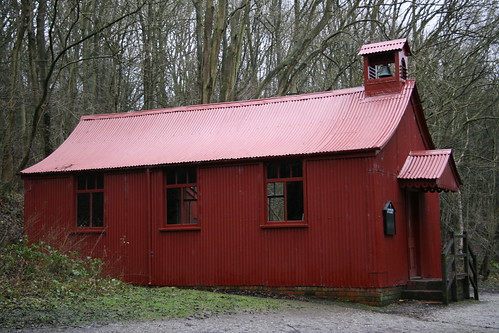One such subject was first on the agenda at today\'s meeting. Corrugated Iron Buildings. CORRUGATED IRON BUILDINGS?! Well, yes. Pretty they aren\'t (usually), but these humble constructions are an important and fascinating part of the built heritage of Britain, and the world. Cheap and easily constructed, they were built in British factories and transported by rail, road and sea to all corners of the Empire. Gold Rush cottages in Australia, school rooms in South Africa, mission halls in the Black Country: corrugated iron buildings went up in their thousands from the later nineteenth century through to the early years of the twentieth. Many survive in everyday use, and at museums such as Blist\'s Hill, The Museum of Kent Life and the Avoncroft Museum of Buildings, but many more existed until comparatively recently, forming an important part of the memories of many of us. How many people alive today once worshipped in a corrugated iron church, were educated in a corrugated iron school room, waited for the train in a corrugated iron railway platform shelter, or enjoyed the first flowerings or romance at a dance in a corrugated iron village hall?
But that\'s not all. The story of the corrugated iron building didn\'t end with its gradual fall from favour, in its traditional form, during the first half of the twentieth century. As the four-square building declined so its half-round cousin the Nissen Hut rose and became a military, and a national icon. Designed by Major Peter Nissen in the first World War it became the utility building of choice for the British Army in both world wars. Along with its larger cousin the Romney Hut these curved-roof, dormer-windowed wonders became stores, hospitals, dormitories, mess rooms and dance halls. Many thousands survive today, converted to civilian purposes, or derelict: an eerie reminder of a conflict long-passed.
This is real history, overlooked for too long, but a topic that touches on many of our lives, and forms part of the story of most towns and villages. So, an obscure subject? Yes, a bit. Unglamorous? Probably. A fascinating slice of architectural history? Certainly. The kind of thing
Shire does best? Definitely!




Comments
You must be logged in to comment on this post. Click here to log in.
Submit your comment